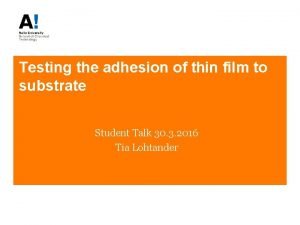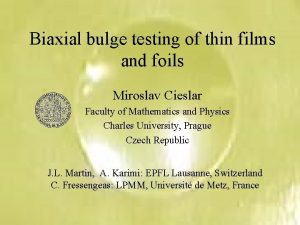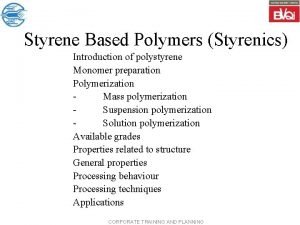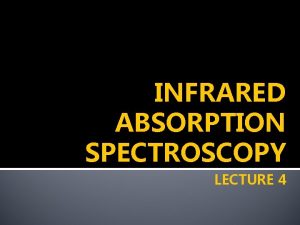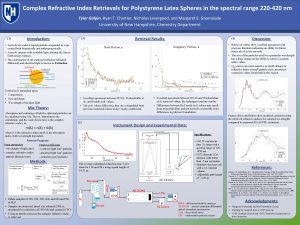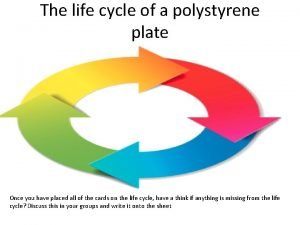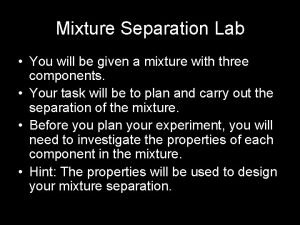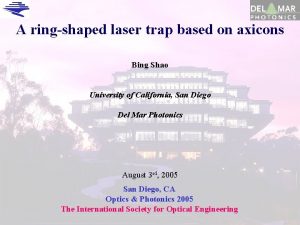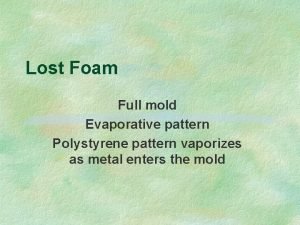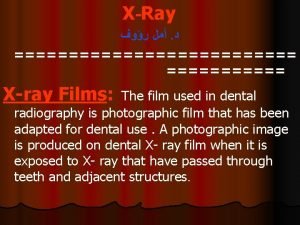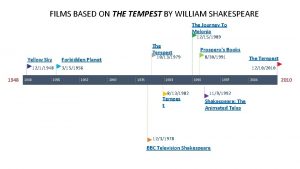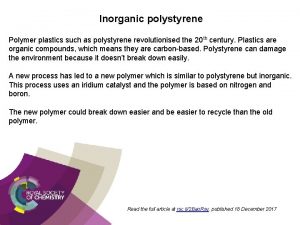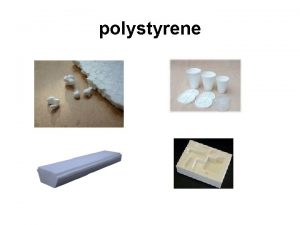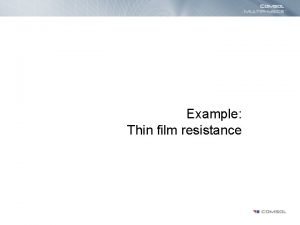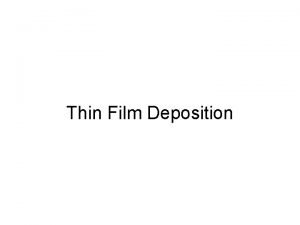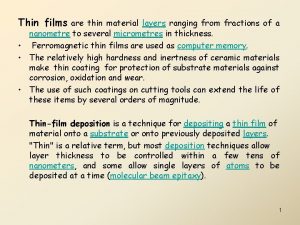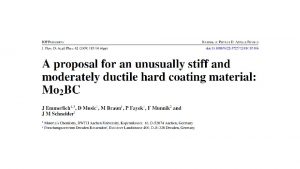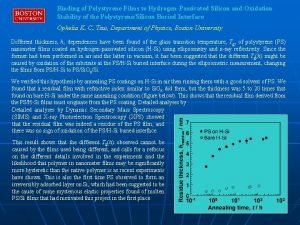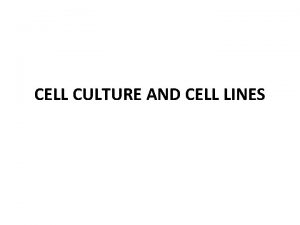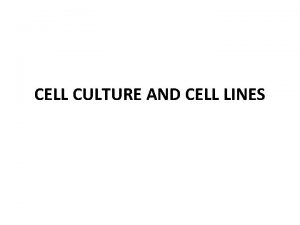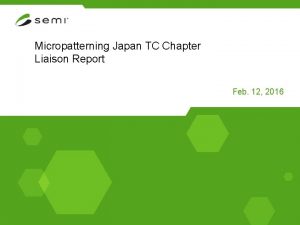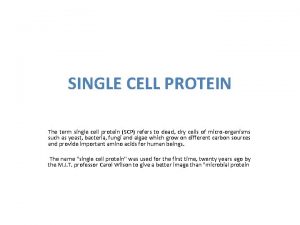Micropatterning Thin Polystyrene Films for Single Cell Culture


















- Slides: 18

Micropatterning Thin Polystyrene Films for Single Cell Culture Biological Microsystems Lab Dr. David Eddington Elly Sinkala Krina Gandhi

Objective l Pattern 500 um wells and plot graphs for : • Well depth vs. RPM • Well depth vs. # of layers of polystyrene Pattern smaller diameter wells (10 um – 25 um) l Culture cells in the wells l Bovine capillary endothelial (BCE) cells deposited in an array of wells 50 um in diameter

Motivation Show that we can culture a single cell in one well l Control cell-to-cell interactions l Control cell shape l Applications: l • Study cell characteristics • Drug testing • Tissue engineering

Materials l Su-8 photoresist • Epoxy based photoresist • Sensitive to near UV radiation • Thermally stable • Suited for permanent use applications su-8 molecule

Materials l Polydimethylsiloxane (PDMS) • • Non-toxic Hydrophobic Transparent Readily available Curing agent Elastomer base

Materials l Polystyrene • Clear, colorless polymer • Easily available • Cost effective

Processes Photolithography Process of transferring geometric shapes on a mask onto silicon wafer l It involves: Ø Cleaning Ø Application of photoresist (su-8) Ø Soft bake Ø UV Exposure Ø Post bake Ø Development l

Processes Silanization Wafer placed in a vacuum along with 30 u. L of tricholorosilane for 2 hours l Produces thin silane coating on the wafer l Reduces adhesion strength between PDMS and silicon l Facilitates easy separation of PDMS l Vacuum chamber Tridecafluoro-1, 2, 2 -Tetrahydrooctyl-1 -Trichlorosilane

Processes Soft Lithography Mix PDMS (10: 1) Remove bubbles Pour PDMS on the silicon master l Cure for 2 hours at 80°C l Peel off the PDMS mold l l l Elastomer base PDMS in a vacuum chamber Curing agent

Processes Embossing Glass cover slips coated with polystyrene Spin polystyrene on glass cover slip l Place PDMS mold over it l Place it on a hot plate for 10 min at 180°C l Peel it off once cooled l PDMS mold

Processes Well Depth Measurement Height vs. Diameter plot generated using data from profilometer Tencore Profilometer

Processes Cell Culture • Sterilized the wells • Seeded cells (MDCK-Madin-Darby Canine Kidney Cells) • Allowed cells to adhere (3 -4 hours) • Washed excess cells with PBS • Filled the wells with media

Results

Results

Results l Smallest wells patterned: 68 um l 4 cells in 68 um well 4 MDCK cells in 68 um wells

Conclusion l Collected data and plotted them for: • Well depth vs. RPM • Well depth vs. # of layers Smallest wells patterned: 68 um l Was able to culture cells l Future Work Continue to work on smaller diameter wells l Try to culture one cell in one well using the smaller wells l

Acknowledgments l l l Dr. David Eddington Elly Sinkala Dr. Takoudis Dr. Jursich National Science Foundation (NSF) Department of Defense (DOD) EEC-NSF Grant # 07551150

References l l l "Single Cell Localization and Patterning. " Rapid Prototyping Laboratory for energy and biology. 2007. Stanford University. 29 July 2009 <www-rpl. stanford. edu/. . . /celllocalization/>. Wang, Chun, Fung Ling Yap, and Yong Zhang. "Micropatterning of polystyrene nanoparticles and its bioapplications. " Colloids and Surfaces B: Biointerfaces 46 (2005): 255 -60. Nakanishi, Jun, Tohru Takarada, Kazuo Kamaguchi, and Mizuo Maeda. "Recent Advances in Cell Micropatterning Techniques for. " The Japan Society for Analytical Chemistry 24 (2008): 67 -72. Whitesides, George M. , Emanuele Ostuni, Shuichi Takayama, Xingyu Jiang, and Donald E. Ingber. "Soft lithography in biology and biochemistry. " Annu. Rev. Biomed. Engineering 3 (2001): 335 -73 Yang, Gloria Y. , Vasudev J. Bailey, Yu-Hsin Wen, Gisela Lin, William C. Tang, and Joyce H. Keyak. "Fabrication and Characterization of Microscale Sensors for. " IEEE Xplore (2004): 1355 -358. Questions? ?
 Who owns working title films
Who owns working title films Film adhesion test
Film adhesion test Bulge test thin films
Bulge test thin films Single camera setup
Single camera setup Styrene based polymers
Styrene based polymers Polystyrene ir spectrum
Polystyrene ir spectrum Refractive index polystyrene
Refractive index polystyrene Polystyrene life cycle
Polystyrene life cycle How to separate sand and finely ground polystyrene foam
How to separate sand and finely ground polystyrene foam Axicons
Axicons Xxxชาย
Xxxชาย Polystyrene pattern
Polystyrene pattern Identification dot on x-ray film
Identification dot on x-ray film How to analyze film
How to analyze film The tempest movie by william shakespeare
The tempest movie by william shakespeare Readymade films
Readymade films Hollywood renaissance films
Hollywood renaissance films Conventions of a short film
Conventions of a short film Cinema du look films
Cinema du look films

